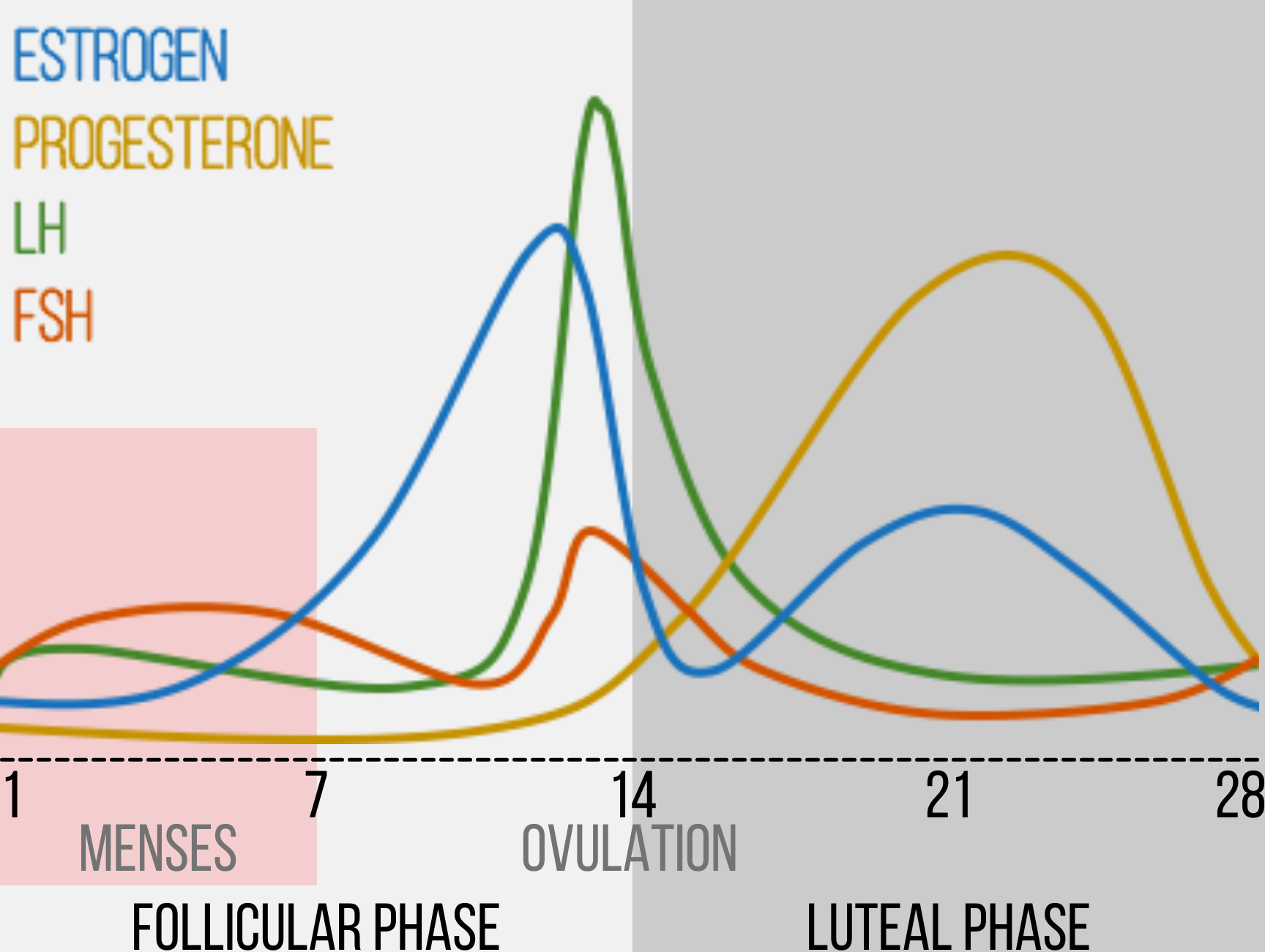Understanding Your Cycle
There is value and empowerment in understand what is happening to your hormones month to month. When it is understood what changes should be happening, it is easier to identify when hormones may not be functioning at their best. Let’s start with the basics, a typical cycle lasts approximately 28 days and has 2 major events and is divided into 2 major phases, here is what is happening at each:
The 2 major events each month:
Menses: the first day of your period is known as day 1 of your cycle and typically lasts 5-7 days
Ovulation: occurs when a mature egg is release from the ovaries to the uterus. This is the most fertile time in a cycle and typically lands around day 14
The 2 major phases each month:
Follicular: days 1-14 (the first half) of your cycle is known as the follicular phase because it is when the eggs, which are also known as follicles, mature in the ovaries
Luteal: days 14-28 (the second half) of your cycle is known as the luteal phase because it is when the egg has been ovulated leaving behind the corpus luteum which temporarily produces hormones necessary to thicken the uterine lining and prepare for potential pregnancy.
HORMONAL CHANGES
Although this overview has been very fertility specific so far, hormonal changes are what allow these phases and events to occur. The chart below outlines how hormones fluctuate throughout a healthy female cycle, the main events and the main phases that take place each month.
This squiggly chart may look confusing at first glance, but it is quite straight forward when we understand the role of each hormone throughout a women’s cycle. So let’s get into when each hormone shines, the role it plays and how it can lead to changes throughout the body:
Estrogen
Estrogen levels steadily rise in the first half of your cycle, reaching a peak just prior to ovulation. This peak in estrogen triggers LH production that leads to the LH spike shortly after (we will cover the significance of the LH spike below).
In the second half of your cycle, estrogen follows the same curve as progesterone, contributing to preparation of the uterus for a potential pregnancy.
Progesterone
Progesterone levels are relatively low in the first half of your cycle. After ovulation, the corpus luteam (in the ovaries) begins producing progesterone to prepare the uterus for pregnancy. if no pregnancy occurs, the corpus luteam dies and progesterone levels drop. Progesterone is known as the pregnancy hormone (pro gestation) because if pregnancy does occur, it plays an important role!
Now that we have covered how estrogen and progesterone fluctuate throughout your cycle, click here to learn symptoms of elevated & low levels of estrogen and progesterone. Next we are moving on to talk about LH and FSH, which are hormones closely related to fertility changes:
Luteinizing Hormone (LH)
The major role of LH is to spike just prior to day 14 of your cycle initiating ovulation of a mature egg from the ovaries. Like we mentioned before, the spike in estrogen triggers the release of LH, and the spike in LH triggers ovulation. If either estrogen or LH do not reach a certain threshold, ovulation does not occur (no egg is released from the ovaries) and there is no opportunity to become pregnant that month.
Follicle Stimulating Hormone (FSH)
FSH plays an important role in the first half of your cycle. The first peak plays a role in recruitment, selection and growth of a follicle (egg) in the ovaries, as it’s name implies! The second peak occurs alongside the LH spike, which contributes to ovulation.
Testosterone
Some may be asking, where is testosterone on this chart? Well, testosterone levels do not have much fluctuation throughout the month, its levels remain fairly consistent.
Now that we have covered the important phases and events that are happening during your cycle, click here to learn about how to track your cycle so that you know when ovulation occurs and what body changes you should notice that indicate ovulation is taking place. Another great resource is this article, which shares symptoms of high vs low levels of estrogen and progesterone, to cross-reference the symptoms with your new knowledge of how your hormone levels are changing throughout the month. It also discusses the use of testing when symptoms are more complex.
For more information about your personal hormonal health, work with a naturopathic doctor to develop a personalized treatment plan and discuss the potential need to include comprehensive hormonal testing as a part of your treatment.
